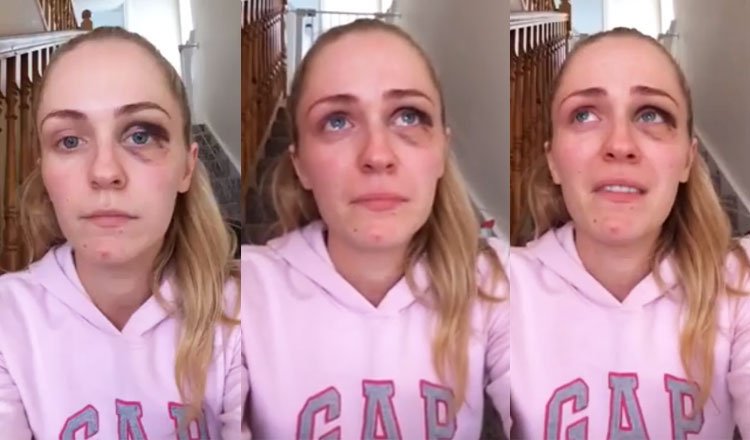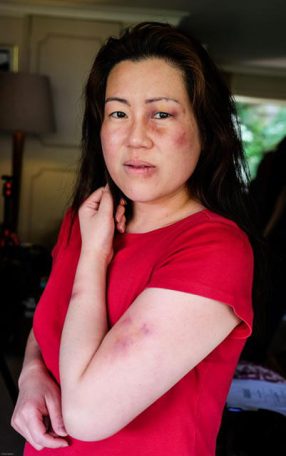Elisabeth Shaw, CEO, Relationships Australia NSW, writes about how to break the cycle of domestic violence.
Although public awareness about domestic violence has increased, it can still be difficult when we are in an abusive relationship to really know “is that what is happening to me?” This is partly because we might have some fixed ideas about what domestic violence looks like. It might also be because our partner perpetrating the abuse has said that we are to blame for the behavior, bringing it on ourselves. It might also be that our relationship “bottom lines” – the things we thought we’d never put up with – are messed with because our current partner is less abusive than our last one, or than our Dad; we believe ourselves to be in love, or we are just too horrified or embarrassed to think it could be true. So, we persist.
“Domestic violence” is an overarching term for a variety of controlling and abusive behaviors that range from psychological abuse (belittling, demeaning, discounting, shaming) social abuse (reducing your access to friends, family, a separate social life, even work) financial abuse (not allowing access to finances or controlling what is spent) sexual assault (including acts that are unwanted, feeling coerced into behaviors you object to, unable to say no, feeling you have to have sex to “keep things calm”) physical assault (grabbing, standing over, slapping, punching, tripping) and damage to property or pets – punching walls or slamming doors or threatening animals are all intimidation tactics. There is the fear that “I’ll be next”.

The statistics
According to a national survey, around 1 in 6 (17%, or 1.6 million) women and 1 in 16 (6.1%, or 548,000) men had experienced physical or sexual violence from a current or previous cohabiting partner since the age of 15. Women were more likely to experience violence from a known person and in their home, while men were more likely to experience violence from a stranger and in a public place (ABS 2017; AIHW 2018).
Women who experience violence can lose their self-confidence, their sense of personal agency to make decisions and act on them and can fear for their lives. If children are involved then they can be used as a pawn and a threat, and of course will be witnessing the behavior and learning from it. It could be that physical assault is not part of the mix; it may be a diverse constellation of coercive and controlling behaviors and experiences, some small and some large, that make up the experience of suffering.
Spotting the signs -How To Break The Cycle Of Domestic Violence
Men who use violence may have traumatized histories of abuse themselves, or they may not. Often, drinking is involved, but not always. There can be long periods in between incidents, or it may be a daily occurrence. Some seem to be in control of themselves and the abuse is sadistic and calculated. Others can seem to be “exploders”, fine one minute and out of control the next. There is no one profile. Over time, women can start to feel to blame for the behavior, implicated in it, might have blocked being hit or even hit back in self-defense, and they start to frame this as “I’m abusive too”. However, protest and defense is not the same as abuse. Although women can be abusive, men less commonly report that they are afraid of their female partners, and it is fear that can be a defining factor.
Women in these relationships can also say “why do I choose these men?” This is another way of taking responsibility for the behavior. Women do not choose to be in an abusive relationship, they choose the relationship itself, and men rarely show they are violent from the first date. The behavior can tend to get introduced over time, oddly enough as the couple becomes more involved and see themselves as in love or at the point of commitment. For example, pregnancy can be a particularly at-risk time.
For some women, this will be the first time they have experienced violence, and the shock and disbelief might make them accept the initial apologies and explanations. They might think their partner is wounded and needs help, and they could love them out of the behavior. Those who have experienced abuse before, might have either thought that some abuse is normal, or that the current abuse is not as bad as the past. Feeling in love, attached, trying to help, staying because of the children or nowhere else to go, all become reasons to keep trying. The complex mix of attachment and fear, love and hateful behavior, makes leaving such relationships a journey, and not a black and white decision.
What is really important to know is that the behavior is very unlikely to change on its own. There needs to be professional help involved, and seeking it is a key way your partner can prove he is serious about changing. An apology and promise to do better will not be sufficient to stop the abuse. Individual counselling may assist if the counsellor is well trained in working with domestic violence and abuse. General supportive counselling runs the risk of even inadvertently fostering a sense of entitlement for the behavior, or further excuses for it. Nor is couple counselling seen to be the right approach, as by its nature implies joint responsibility. Of course, there will be a range of relationship issues that do need to be addressed, and couple work will be helpful in the longer term, but not initially.

Getting help: How To Break The Cycle Of Domestic Violence
The first step is for the perpetrator to acknowledge the abuse and take responsibility for it, and to accept that they need to attend a behavior change program. These are provided across the country by organisations like ours, Relationships Australia NSW. It is important to be sure you seek an accredited, comprehensive program like this, as research currently demonstrates that change is likely to involve two years of solid professional work. A behavior change program is step one, and that can go from anywhere between 16-24 weeks.
Those who are experiencing violence and abuse need to receive supportive, non-judgmental services to assist them to reflect on their options and change process. Friends and family will say “just leave” – but it is rarely that simple. The shame, stigma, lack of resources, ongoing attachment, needs of the children, and fear that the violence will escalate, are all valid issues and need to be considered. Women in this position need to get an outside perspective, as maybe friends and family, if they are aware of what’s happening, are simply not helping. Perhaps their own history and circumstances mean that they can’t provide enough emotional distance on what is a very disturbing and frightening issue. Many specialised organisations offer counselling in relation to violence and abuse, and even making a phone call to get a new perspective can assist.
What we know is that awareness raising is not changing the fact that domestic violence is still common in our communities and can be lethal. Relationships Australia NSW is here to assist, for those seeking support and for those seeking to change. We encourage engagement in these sorts of specialised, expert services as early as possible to break the cycle both for the current relationship and children involved, as well as across generations.
The Carousel would like to thank Elisabeth Shaw who is CEO of Relationships Australia NSW and a clinical and counselling psychologist specialising in couple and family work.







